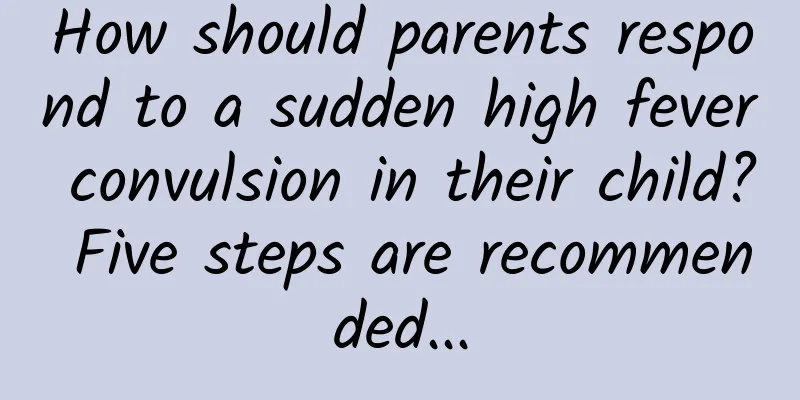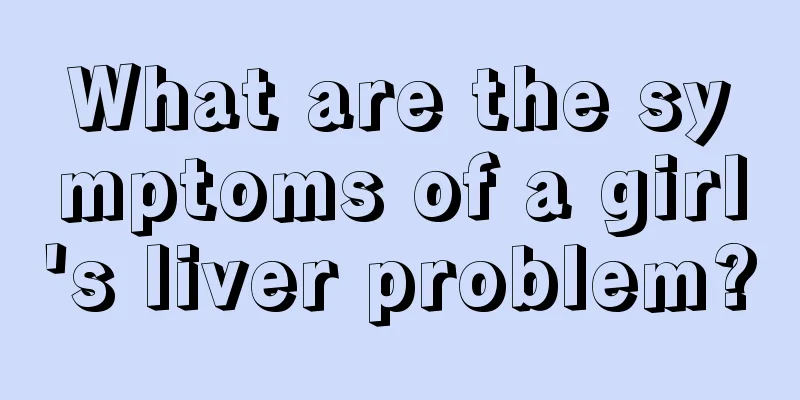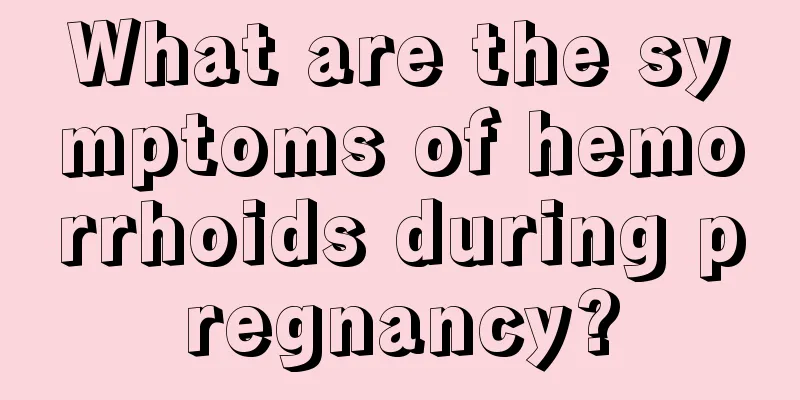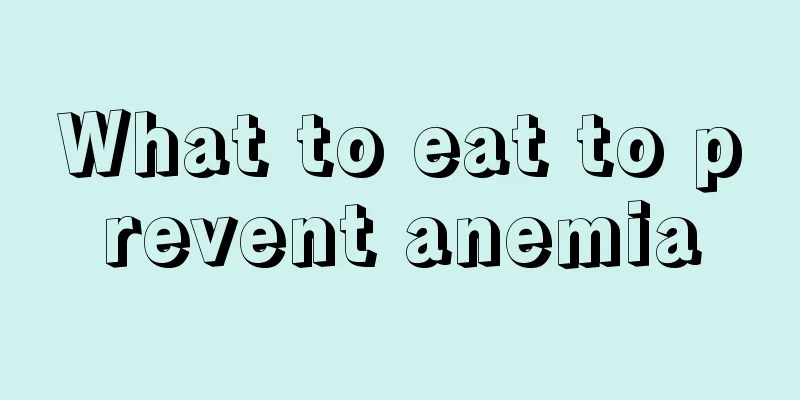How should parents respond to a sudden high fever convulsion in their child? Five steps are recommended...

|
The Spring Festival has passed, but the temperature is still low and influenza is still prevalent. Recently, the pediatric outpatient clinic of Hunan Guangxiu Hospital has received many children with fever. If a child suddenly develops a high fever, he or she may experience symptoms such as eyes rolling up, teeth clenching, whole body convulsions, and even loss of consciousness. This is medically called "febrile convulsions in children." Once the above situation occurs, many parents may not know how to deal with it promptly and correctly. This issue of Guangxiu Nursing Class will help you deal with it scientifically. 1. What is “febrile convulsion”?Febrile convulsion, commonly known as "convulsion", refers to a sudden rise in body temperature that causes movement of the cerebral cortex and a large number of abnormal discharges of nerve cells, resulting in temporary involuntary contraction of the whole body or local muscles, accompanied by impaired consciousness (excluding intracranial infection and other organic or metabolic diseases that cause convulsions). In children with high fever convulsions, the body temperature is usually above 38.5℃-39℃, and the age of onset is mostly between 3 months and 6 years old. 2. High fever convulsion has these clinical manifestations1. Appearing in the early stage of fever (rectal temperature ≥ 38.5℃, axillary temperature ≥ 38.0℃, within 6-12 hours after the onset of fever, and no later than 24 hours); 2. Loss of consciousness or falling, with brief involuntary twitching of the limbs, trunk, and facial skeletal muscles; 3. Irregular or paused breathing, accompanied by cyanosis of the lips; 4. The eyes are fixed or turned upward, staring, or squinting, and the head is tilted back or turned to one side; 5. Foaming at the mouth, clenched jaws, muscle rigidity, and incontinence; 6. Duration of convulsion: It will be relieved within seconds or minutes, and most of them will not exceed 15 minutes. Consciousness will be restored quickly after the convulsion, and there will be no abnormality of the central nervous system. 3. Please remember the emergency treatment methodsStep 1: Place the child on his side, tilt his head to one side, unbutton his collar, and loosen his belt; Step 2: Clear respiratory secretions or vomitus to prevent choking into the trachea and causing suffocation. Do not feed water, medicine or food to the child at this time; Step 3: Wrap a tongue depressor or chopsticks with soft cloth and place it between the upper and lower molars of the child to prevent the tongue from being bitten. Remember not to put your fingers directly into the child's mouth to avoid biting; Step 4: Cool down (use appropriate physical cooling according to the season). Specific methods are: 1. Cold compress: Place a cold towel on the child's forehead, armpits, and groin, and change the positions alternately; fill a hot water bottle with ice water or use an ice pack, wrap it with a towel and place it on the child's forehead, neck, or groin, or use a cooling patch. 2. Warm water bath: Use a warm water towel to gently wipe the neck, armpits, elbows, groin, etc. repeatedly to promote blood circulation in the body and facilitate heat dissipation. 3. Rectal antipyretic suppository. Step 5: While taking emergency measures, you should also rush to get the child to the hospital as soon as possible. Do not wrap the child tightly during the trip to the hospital, as this will make it difficult to observe the condition and may cause the child to suffocate. The Pediatric Department of Hunan Guangxiu Hospital reminds you that during emergency treatment and medical treatment, do not pinch the child's philtrum or press hard on their limbs to avoid fractures. 4. These preventive measures should also be understood1. Most febrile convulsions in children are caused by upper respiratory tract infections, so prevention and treatment are the key to prevention. In early spring, parents should give their children proper exercise and adequate nutrition to improve their immunity and minimize or avoid acute febrile diseases in infants and young children. 2. Children who have had febrile convulsions should be given antipyretics or physical cooling methods in time when they have a cold or fever to prevent a sudden increase in body temperature, and should go to the hospital for observation and treatment in time. 3. High fever convulsions can easily cause craniocerebral damage. If not treated in time, prolonged or repeated convulsions may affect intellectual development and even cause lifelong regrets. The Pediatric Department of Hunan Guangxiu Hospital reminds parents that they should remain calm and treat the disease scientifically when it occurs, and never panic. References: Liu Yuan, How to effectively provide first aid and care for children with high fever convulsions? [N]. Medical Health Care News, 2024-08-03(006)
(Edited by YT) |
<<: Afraid of light and love to rub eyes? This may be the reason
Recommend
How to store expressed breast milk? ?
Many mothers have to express and save breast milk...
Can I eat cucumbers when I have my period?
When you have your period, you must know what foo...
Changes in sexual desire before and after menstruation
Menstruation is something that every woman has to...
Why do women's private parts become dirtier the more they wash?
Leucorrhea is a discharge from women's vagina...
Treatment of elevated thyroid hormone levels during pregnancy
High thyroid hormones during pregnancy have a gre...
What are the symptoms of irregular menstruation
Menstrual disorders, also known as irregular mens...
Will the cysts get smaller after taking Chinese medicine?
Chocolate cyst is a type of gynecological disease...
The main function of interferon gel
What is the key function of interferon gel? Recom...
Girls have pain in the lower right corner of their stomach
There are many reasons for the pain in the right ...
My period is eight days late and it’s here again?
Under normal circumstances, women's menstruat...
What are the harms of having sex during menstruation to women?
A healthy sex life is a lubricant in the marriage...
What causes long menstrual intervals?
We all know that menstruation has a certain perio...
Treatment of pelvic inflammatory disease cannot be rushed
Ms. Wang, 40, is successful in her career and is ...
What is the fastest way to enlarge your breasts at home?
Modern women are increasingly demanding perfectio...
Saddle uterus pregnancy success rate
A saddle-shaped uterus has a significant impact o...









